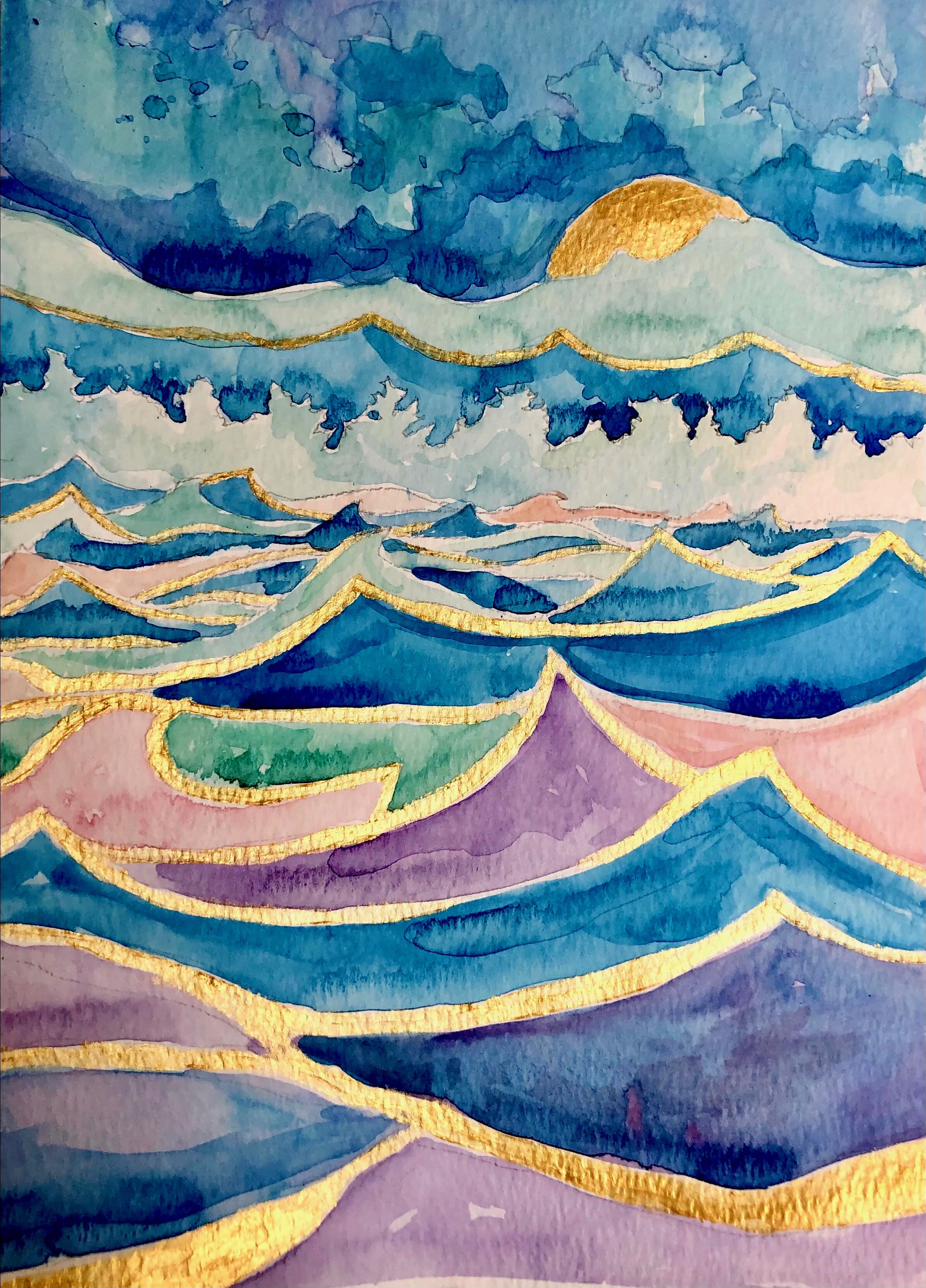Wise mind ACCEPTS: distress tolerance skills through art therapy practice
Clare McCarthy, ATR-BC, LCPC
Our current world continues to present us with ongoing challenges in managing emotional distress and coping with difficult emotions such as fear, grief, and anger. Dialectical Behavioral Therapy (DBT) offers us a range of evidence-based tools that assist us in successfully tolerating difficult emotional experiences.
Using DBT crisis survival skills provides time for your emotional brain to regulate itself so you can navigate the crisis without making the situation worse. These particular distraction/emotional crisis skills are easily remembered using the acronym ACCEPTS. Each of the letters corresponds to a specific approach to distracting the mind and helping to move safely through a mental crisis. Some ideas I have found helpful in practicing this skill from an art therapy perspective are included below.
Activities: Expressive art therapy activities are an engaging way to distract your mind from the immediate challenge or the emotional crisis. Art therapy activities include the following:
Coloring books
Art directive: draw a circle and create designs inside it
Organizing: sharpening pencils, washing brushes, cutting paper, re-ordering supplies
Reading books about artists that interest you
Looking up reference photos (pinterest, library archives, digital art websites)
Contributing: The behavior of contributing can help distract from emotional pain and suffering by focusing your mind on someone else, or something else that you can somehow make better. Expressive arts therapy can provide us with tangible products that can benefit the lives of others. Ideas include:
Make art for a friend (friendship bracelet, functional art product, décor for their place, etc.)
Make cards to send to others who may benefit from encouragement or support (art therapy for grief)
Knit or crochet items for a charity such as:
Comparison: When you're using comparison to distract from difficult emotions, you are working to compare your current situation or the current emotional crisis to a situation that is worse than the one you're in now. Comparison through an artistic lens can be done by the following:
Explore art you have made in the past, and how it may represent change and growth. Have things gotten better since then, or shifted?
Use art history to expand perspective of human life across the ages and cultures
Emotions: The idea is to distract from one emotion by finding a way to encourage a different emotion. Listening to music that puts you in a particular mindset can help in shifting to an alternative emotional state. Putting together a playlist ahead of time can be time well spent.
Responding to particular music with art making also can help to continue shifting emotions away from a crisis state. Finding one color that corresponds to the emotion of the music and painting or coloring an entire page or canvas in that color, or various versions of that color, can be an accessible way to use color and sound to shift emotions.
Pushing away: Prior to using the skill of pushing away, start by asking yourself two questions: “Can I do anything about this right now?” and “Is now a good time to work on this issue?” If the issue is not under your control, or if the time is not right to address it, pushing away can be a helpful skill.
Drawing therapy activities to explore this skill include visualizing and sketching out a container to hold the problem securely. This is helpful in imagining how the sources of emotional pain can be contained until it is the right time to address the issue.
Thoughts: This one is the skill of distracting yourself from a crisis by focusing your mind on new thoughts. Using art as a strategy to engage the cognitive thinking brain can take many forms. Ideas include:
Art therapy experiential exercise with cognitive focus
Learning the basics behind an art technique or drawing skill, particularly those that involve mathematics or science
Sensations: Sensations are very helpful in distracting the mind. Focusing on your sensations is helpful if you are in intense emotional or physical pain or are feeling overwhelmed by an urge to do something that might be harmful to you. One easy way to practice this skill is to run through the following grounding practice within an art making session:
Two things I see: Focus on one or two specific visual aspects of your art making, or carefully observe your surroundings.
Two things I smell: Notice the smell of the pigments or materials you are working with, or attune yourself to the natural smells of your environment.
Two things I hear: Carefully listen to the music you have selected as part of your art making experience, or tune into the sounds of the room. Focus in to two particular sounds and use your focus to help amplify the sounds in turn.
Two things I touch: Explore the tactile sensations that art making provides. Notice the textures, temperatures, viscosity, and tactile qualities of the art materials. Notice the way that your body feels in your clothes, and the ways that the floor or chair makes supportive contact with your body.


